- JST Home
- /
- Strategic Basic Research Programs
- /
 PRESTO
PRESTO- /
- project/
- Topological Materials Science for Creation of Innovative Functions/
- [Topology] Year Started : 2018
[Topology] Year Started : 2018
Daisuke Aoki
Fusion of different polymer topology utilizing topology transformation reaction
Researcher
Daisuke Aoki
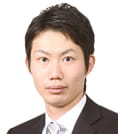
Assistant Professor
School of Materials and Chemical Technology
Tokyo Institute of Technology
Outline
Mechanically cross-linked polymers are prominent candidate for the developing of the innovative materials, because of their unique properties such as high stretchability, and stress-relaxing property, which is mainly comes from the high mobility of the polymer chain at the cross-link point. The aim of this study is to establish new way to synthesize mechanically linked polymers by utilizing topology transformation reaction. The result of this research is expected to contribute to open up not only new field of material science but also fundamental polymer science.
Masaki Uchida
Developing dissipationless conduction function of topological semimetal by utilizing thin film technologies
Researcher
Masaki Uchida

Associate Professor
School of Science
Tokyo Institute of Technology
Outline
Topological Dirac semimetal hosts an ideal electronic structure corresponding to the parent phase of topological materials. However, there are problems peculiar to materials, and studies on quantum transport properties in thin films have been delayed. In this research, I aim to derive quantized conduction function potentially possessed by Dirac semimetals and to develop new approaches toward future device application of dissipationless conduction, by utilizing thin film technologies such as quantum confinement, proximity effect, heterostructure and so on.
Shinya Kasai
Developing the skyrmion based devices
Researcher
Shinya Kasai
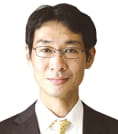
Group Leader
Research Center for Magnetic and Spintronic Materials
National Institute for Materials Science
Outline
This research aims the demonstration of magnetic skyrmion based spintronics devices with high density and low energy consumption. In combination with the microfabrication and RF measurement techniques, we will demonstrate the real-time operation of non-volatile memory functions with voltage and/or electrical current pulses. To overcome the weak thermal stability in current skyrmion materials, we will also investigate the new materials with highly thermal stability for skyrmion devices.
Ken Shiozaki
Topological material science based on generalized cohomology theory
Researcher
Ken Shiozaki
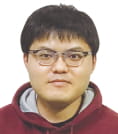
Assistant Professor
Yukawa Institute
Kyoto University
Outline
In this study, I develop the systematic and generic description of topological phases in the basis of the generalized cohomology theory. In particular, I implement space group symmetry, which is inherent in realistic materials, in the framework of the generalized cohomology theory, and develop analytical and numerical calculation method to classify and diagnose topological phases and predict new phenomena. I will also implement various topological invariants in the band theory on the first principles calculation.
Shinichiro Seki
Generation and control of giant emergent electromagnetic field based on topological magnetic and electronic structures
Researcher
Shinichiro Seki
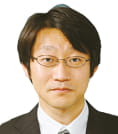
Associate Professor
Center for Emergent Matter Science
The University of Tokyo
Outline
When magnetic or electronic structure is charactered by nontrivial topology, conduction electrons often feel giant emergent electromagnetic field originating from the “curved” space. In this study, based on the novel material design strategy employing the rare-earth elements, I’ll explore new bulk compounds hosting magnetic skyrmions (vortex-like swirling spin texture in real space) and Weyl points (band-crossing point in reciprocal space). By using these systems, I attempt to maximize the anomalous material responses associated with emergent electromagnetic field and establish the novel approach for efficient electron manipulations.
Kazumasa Takeuchi
Determining the structure of liquid crystal topological turbulence and initiating science of negative viscosity material
Researcher
Kazumasa Takeuchi

Associate Professor
Graduate School of Science
The University of Tokyo
Outline
The electroconvection of liquid crystal has a turbulent regime composed of topological defects. Although this topological turbulence was shown to exhibit universal out-of-equilibrium fluctuations and negative viscosity, a difficulty lies in the fact that its three-dimensional structure is unknown. Here, we aim to determine its three-dimensional dynamic structure, using high-speed confocal microscopy and recent techniques for visualizing topological defects. We thereby expect to obtain insights on the mechanism of negative viscosity and a statistical physics viewpoint of the topological turbulence. This will contribute to settling a design principle of negative viscosity material and gaining perspectives on other material, thus initiating science of negative viscosity material.
Kosuke Nakayama
ARPES study of novel topological materials for all the crystal orientations
Researcher
Kosuke Nakayama
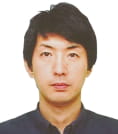
Assistant Professor
Graduate School of Science
Tohoku University
Outline
This research aims at developing an experimental technique for visualizing the bulk and surface electronic states of various materials for all the crystal orientations by combining advanced fine processing technology and angle-resolved photoemission spectroscopy. By utilizing this technique, novel topological materials and exotic fermions will be explored.
Sadashige Matsuo
Majorana Fermions realized in superconducting junctions of double nanowires
Researcher
Sadashige Matsuo
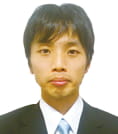
Special Postdoctoral Researcher
Center for Emergent Matter Science
RIKEN
Outline
Non-local superconducting proximity effect into double nanowires offers a new platform for realization of topological superconductivity and Majorana Fermions. In this project, we will engineer the non-local superconducting proximity effect via control of electron-electron interaction in the respective nanowires and demonstrate fractional AC Josephson effect as a signature of the Majorana Fermions with no magnetic field.
Yuto Moritake
Photonic topological edge states in meta-atom chain
Researcher
Yuto Moritake
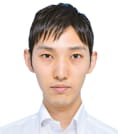
Assistant Professor
School of Science
Tokyo Institute of Technology
Outline
This research aims creating novel type of photonic topological edge states (PTES) by using a meta-atom chain. PTES is optical analogue of topological edge states in topological insulators and attracts many attentions due to its exotic optical properties such as directional selectivity, robust to perturbation. In this study, we focus on one-dimensional zig-zag chain which mimics SSH model and possesses PTES at the edge site. The main concept of his research is introducing a meta-atom” and quasi-periodicity into the zig-zag chain to create novel PTES and extend capability of the PTES. The meta-atom control and break the symmetry of the system, realizing a new type of PTES with exotic optical properties. Moreover, quasi-periodicity will extend the concept of the zig-zag chain based on SSH model to quasi-periodic sequence. As the final target, we plan to demonstrate manipulation of emission from quantum emitters by using novel PTES.
Haruki Watanabe
Topological material search based on symmetry indicators
Researcher
Haruki Watanabe

Associate Professor
School of Engineering
The University of Tokyo
Outline
In this project, we will perform comprehensive material search to discover new topological materials. Our approach is based on the recently developed technique, so-called “symmetry indicators”, which can make use of all spatial symmetries as well as internal symmetries and easily diagnose the topological properties of materials. The goal of this project is thus to theoretically predict new topological insulators, superconductors, and magnets.













